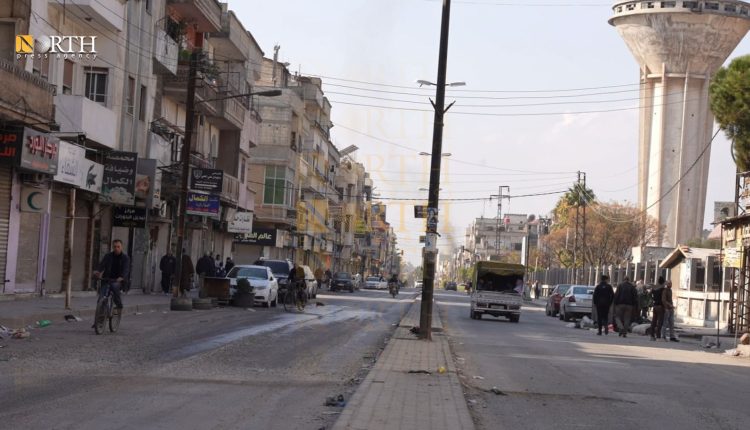HTS Arrests Dozens in Homs Amid Rising Sectarian Violence in Post-Assad Syria
By Kardo Roj
HOMS, Syria (North Press) – Hayat Tahrir al-Sham’s (HTS) General Security Office arrested 20 individuals in the eastern countryside of Homs on Saturday as tensions escalate in the wake of the Assad regime’s collapse.
The arrests, targeting residents from specific villages associated with Sunni and Shia communities, have heightened fears of sectarian violence in a region already grappling with instability and reprisal attacks.
Wave of Arrests and Sectarian Targeting
North Press correspondents reported that HTS security forces detained individuals at checkpoints in Deir Baalba and Wadel, east of Homs city. “The detainees were singled out based on the identification of their residency in villages such as Shataya, Abu Dali, Jabariya, and Hazmiya,” the correspondent said, noting that these areas are predominantly Sunni and Shia.
These arrests come against a backdrop of growing sectarian violence. Two days earlier, 27 civilians—mostly Alawites—were killed in reprisal attacks in neighborhoods and villages around Homs, allegedly carried out by armed factions associated with the Turkey-backed Syrian National Army (SNA).
Local residents describe a worsening security situation marked by retaliatory killings, forced displacements, and growing mistrust between communities.
Escalating Tensions in Homs
The fall of the Assad regime on December 8 ushered in a power vacuum in Homs and other parts of Syria, exacerbating long-standing sectarian divisions. HTS and other armed groups have stepped into the void, establishing control in key areas and enforcing their authority through checkpoints and arrests.
“Incidents of sectarian killings and arbitrary detentions have surged in Homs and its surrounding countryside,” a North Press reporter noted.
Residents in Homs expressed fears that these measures are being used to consolidate HTS’s power rather than to restore order.
Humanitarian Concerns
The United Nations and international human rights organizations have expressed concern over the deteriorating humanitarian situation in Homs. The sectarian nature of the violence has drawn condemnation from groups urging restraint and the protection of civilians.
Rima, a local human rights activist, told North Press that “the current wave of violence reflects the failure of transitional authorities to prevent sectarian retaliation and uphold basic human rights.”
HTS’s expanding influence in areas like Homs has also raised alarm among international observers, given the group’s history of extremist policies and human rights abuses.
A Region in Flux
The collapse of Bashar al-Assad’s regime has led to significant political and security challenges across Syria. While some factions attempt to establish governance structures, regions like Homs remain volatile, with armed groups vying for control.
The transitional government led by HTS faces mounting pressure to demonstrate its ability to govern inclusively and address the grievances of Syria’s diverse population. However, its actions in Homs suggest that sectarian divisions remain a significant obstacle.
The international community continues to monitor the situation, calling for accountability and urging the new authorities to prioritize civilian protection.
Future Outlook
As Homs grapples with an uncertain future, the potential for further violence remains high. The region’s history as a microcosm of Syria’s complex sectarian landscape makes it a critical test case for the success—or failure—of the country’s ongoing transition.

